#Paul Sébillot
Explore tagged Tumblr posts
Text
The Drac of Beaucaire
Note: I'm an English learner and I wrote this text to practise my written English. If you want to give me feedback about my English, please go ahead!
In my publication about the tarasque I mentioned another creature called the drac.
The drac exists in several French tales and legends, especially in Occitania and western Auvergne-Rhône-Alpes. It is most often an incarnation of the Devil, which takes the form of all sorts of creatures, objects, and people. But it seems unable to become a needle as it doesn’t know how to pierce its head to make the eye of a needle.
There are plenty of dracs in France, and the one I want to talk about lives in the Rhône, near the town of Beaucaire. It is said that the it lives in a palace deep in the river. With golden objects, it attracts people to the river and takes them. It especially targets breastfeeding women so they can feed its own children.
Gervase of Tilbury was the first one to write about the creature in his encyclopaedia Recreation for an Emperor (Otia imperialia), in the early 13th century. He portrays a dragon living in the Rhône.
There are different versions of this story. One of my favourites was told by Paul Sébillot in Le Folklore de la France : La mer et les eaux douces (The Folklore of France: Sea and freshwaters). Here is a synopsis:
A woman from Beaucaire was cleaning her laundry in the Rhône when she noticed a wooden bowl floating on water. She was intrigued and tried to grab it, but it moved away. She wanted to get closer, but the more she tried to approach it, the further it was. When she reached a deep area of the river, the drac caught her and took her into the depths.
It brought her to its place and tasked her to feed its child. She was its prisoner for years.
One day, she was given a cake with snake flesh. While eating it, she touched her eye with her greasy hands. At that moment, she noticed that she could see distinctly under water.
The drac finally let her go seven years after snatching her. She went back to Beaucaire and explained to startled inhabitants what had happened to her. She told them the drac fed on human flesh, and, sometimes, it took human form to hide among them.
One day, she met another drac. It had taken human form, but she recognised it with her power. The drac knew how she saw him, and touched her eye to remove her ability.
The drac of Beaucaire is just one of the many legends and tales about this creature. There is a story where it becomes a ball of string to trick a woman. In another tale, it is a mare or a donkey, of which body grows longer as more people mount it. Or a story where it is the master of the ocean.
Sources below
PERBOSC Antonin. Mythologie populaire : le Drac, l'Étouffe-vieille et le Matagot d’après les traditions occitanes. Revue de Folklore français et de folklore colonial, 1941, t. XII, n°1, p. 1-18.
URL (PDF)
SÉBILLOT Paul. Chapitre IV : les rivières, Partie 2 : Habitants et hantises des rivières. In: Le Folklore de la France. La mer et les eaux douces. Paris, France: E. Guilmoto, 1905, p. 339-361.
URL (Gallica)
DELMAS Marie-Charlotte. Drac. In: Dictionnaire de la France Merveilleuse. Paris, France: Omnibus, 2017, p. 186-191.
BLADÉ Jean-François. Le drac. In: Contes de la Gascogne. Paris, France: Calmann Lévy, 1895, p 193-207.
8 notes
·
View notes
Photo
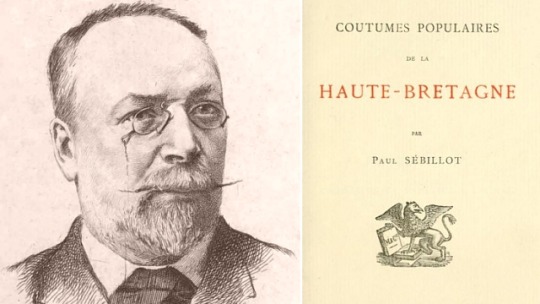
IL Y A 107 ANS | Mort du folkloriste, peintre et écrivain Paul Sébillot ➽ http://bit.ly/Paul-Sebillot Le 23 avril 1918 s'éteignait le pionnier du folklore français, observateur sensible et érudit discret ayant su transformer les croyances populaires en une science riche et vivante, synthétisée dans son œuvre majeure : « Le Folk-Lore »
#CeJourLà#23Avril#Sébillot#folkloriste#folklore#traditions#populaires#érudit#écrivain#biographie#histoire#france#history#passé#past#français#french#news#événement#newsfromthepast
5 notes
·
View notes
Photo

Spring in Brittany, Paul Sébillot, 1874, European Paintings
Gift of Paul-Yves Sébillot, 1949 Size: 14 x 10 3/4 in. (35.6 x 27.3 cm) Medium: Oil on wood
https://www.metmuseum.org/art/collection/search/437647
26 notes
·
View notes
Photo

Spring in Brittany by Paul Sébillot, European Paintings
Medium: Oil on wood
Gift of Paul-Yves Sébillot, 1949 Metropolitan Museum of Art, New York, NY
http://www.metmuseum.org/art/collection/search/437647
1 note
·
View note
Text
Sayings and Beliefs
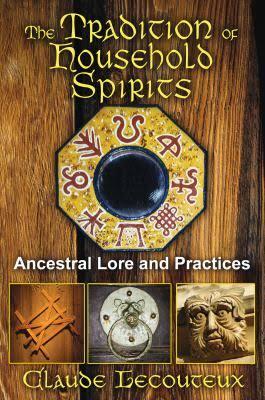
Below, the reader will find a selection of sayings and beliefs concerning the house and its inhabitants. The frequency of omens will leap out and the reader will see the veritable monopoly held by the many recommendations aimed at ensuring happiness, health, and protection. The references in parentheses refer to the bibliography. I have drawn from the collection of Johann Georg Schmidt (eighteenth century) in particular as it is so rich and allows comparisons to be made with the beliefs of other countries.
1. A house without a spirit is cursed (Honko, 174).
2. To keep a cat or dog from getting out, make them walk around the hearth three times then rub them against its wall (Schmidt, II, 63)!
3. You should not throw out the hot water when sweeping the common room; otherwise a quarrel will ensue (Schmidt, VI, 12).
4. It is not a good idea to sweep the house after sunset. This runs the risk of sweeping away, along with the dust, the souls of the dead who often obtain permission to return to their former homes at this time (Le Braz, 268).
5. In the Breton area of the Côtes-du-Nord, it is still believed today that the souls of the dead often return to their former residence at this time, and one risks sweeping them out with the dust: if the wind brings them back, one should take special pains to avoid expelling them a second time. Those who fail to heed these instructions will be vulnerable to being awakened at any time by dead souls (Paul Sébillot, Folklore de France, vol. 1, 136).
6. The threshold must be swept thoroughly so that laime (happiness or good fortune) can enter (Johansons, 147).
7. Whoever has dough in the kneading trough should not sweep the room before taking it out; otherwise the bread will be swept away as well (Schmidt, I, 33).
8. As long as the corpse has not been removed from the mortuary house, the floor should not be swept or the furniture dusted, nor should any dust or sweepings be thrown away, for fear of also evicting the soul of the dead person and drawing his vengeance down on your head (Le Braz, 153).
9. Many houses and stables cannot bear white livestock, who will die or be crushed (Schmidt, V, 3).
10. When carpenters cut the wood for a new construction, the building will burn down if sparks fly from the first blow of the ax (Schmidt, V, 94).
11. When a man you love tries to leave the house, he can be kept there by brandishing the chimney hook around his head three times (Johansons, 134).
12. You should remain with your guest so he cannot steal the chimney hook (Johansons, 133).
13. When the drac brings back eggs, butter, cheese, and lard to people who scorn him, yell the name of our Savior several times and it will let everything fall (Grimm, no. 520). 14. If you wash your money in pure water that has had salt and bread thrown into it, the drac and evil folk will be unable to carry it away (Schmidt).
15. Whoever enters a new dwelling must begin by throwing a living thing like a cat or dog inside, because whoever enters first dies first (Grimm, no. 499).
16. You should never enter a newly built house for the first time without having some kind of domestic animal go in before you, be it a dog, chicken, or cat (Le Braz, 96).
17. The bride should not move in when the moon is waning; whosoever moves in when it is raining will be rich (Grimm, no. 498).
18. When the young couple returns from the church, they should allow a black chicken to go before them into their house; all misfortune will fall upon it (Schmidt, IV, 90).
19. Whoever enters a new home or dwelling for the first time and sleeps there, whatever he dreams of that evening will come true (Schmidt, II, 30).
20. One must move in during the new moon; this will cause food to increase (Schmidt, III, 55).
21. When taking an infant to church to be baptized, he should be taken outside the home through the window! This will make him healthier and he will live longer (Schmidt, III, 85).
22. For people who have lost children, while carrying the newborn they should have the infant baptized not by the door but by the window (Grimm, no. 843).
23. When a person dies, the windows of the house should be opened so that the soul can leave (Schmidt, III, 3).
24. As long as the dead person has not been laid in the coffin, one of the openings of the house must remain unclosed, unless there is one of those gaps in the door called a cat hole or a pane is missing from the window frame, as is frequently the case even among the well-to-do. If this is not done, it is said that the soul of the dead person will roam around the house until he causes the death of another family member (Le Braz, 159).
25. You should never leave the house empty during the burial, otherwise the dead person, whose remains you believe are accompanying to the cemetery, will remain there to guard it (Le Braz, 175).
26. A woman in labor should never look out the window; else the first animal-drawn vehicle that passes will carry off her happiness (Grimm, no. 782).
27. It is not good to let a stranger carry fire or light outside of the house, for this is how food will leave it as well (Schmidt, I, 97).
28. The tutelary spirit of our huts keeps watch on the fire (Johansons, 126).
29. The fire never goes out in a house where the cat, dog, and rooster are black (Grimm, no. 1056).
30. When fire is burning in the hearth, lightning will not strike the house (Schmidt, II, 34).
31. When fire crackles in the stove, a quarrel will follow (Schmidt, IV, 45).
32. The new maid should immediately look through the stove hole; in this way she will quickly become acclimated (Schmidt, I, 98).
33. If many chickens, ducks, pigs, and so forth are dying one after another, light the fire in your oven and cast an animal of each species inside: the witch will die as they die (Grimm, no. 569).
34. If someone steals something from you, attach a horseshoe found by chance at the place where the fire always is burning: you will get it back (Schmidt, III, 35).
35. There is a spirit living in every hut; when there is only one stove (meaning only one heated room), the spirit will stay in it (Honko, 167).
36. When a candle goes out by itself in the house, one of its inhabitants will die (Schmidt, IV, 48).
37. At night, a candle should never be stuck in upside down on the candle holder; if a thief comes in, no one in the house will wake up (Schmidt, II, 74).
38. The corpse being taken out of the house should be placed on the sill three times; once the corpse has been taken away, the gate should be closed and three piles of salt placed in the deceased’s room. They should then be swept up and both broom and sweepings tossed into a field (Grimm, no. 846).
39. When the house is finished, no one who lives there should dare enter first. Whoever does shall be the first to die (Honko, 199).
40. Whoever begins a construction will die shortly thereafter (Schmidt, V, 58).
41. When the peasant dies on his farm, the spirit either mourns or leaves (Honko, 221).
42. If someone [on his or her deathbed] is unable to die, then three tiles should be pulled off the roof (Grimm, no. 721).
43. There where a life has just been born, another should be sacrificed in thanks, otherwise the mâju gars will be furious because it has been neglected and will soon carry off the child’s spirit (Johansons, 185).
44. If a mole pushes up the dirt inside the house or if the cricket sings, someone is going to die; it is the same when the chicken crows or the owl hoots (Grimm, no. 555).
45. When entering the common room, do not look back when going through the door frame (Grimm, no. 360).
46. The spirits are granted the space between the doors; they should therefore never be slammed, or they will be harmed (Grimm, no. 892).
47. When an infant is taken out of the house, the top half of a double door should not be closed, otherwise he will not grow any bigger (Grimm, no. 345).
48. Whoever makes off with the measure used to measure a dead man and presses it at night against the entry door can rob the inhabitants without waking them (Grimm, no. 849).
49. Whoever places a wheel above the main door will enjoy good fortune in the home (Schmidt, IV, 30).
50. If you draw crosses on the doors before Walpurgis Night, witches cannot harm you (Schmidt, I, 93).
51. If a stranger looks into the common room through its door on a Monday, the man will beat his wife (Schmidt, I, 15).
52. If a serving maid wishes to learn whether she will have her position for a long time, she should turn her back to the door on Christmas night and toss the shoe off her foot over her head; if the tip is pointed toward the door, she should leave; if it is the heel, she will stay (Schmidt II, 5).
53. An elder planted in front of the stable door will avert evil spells (Grimm, no. 169).
54. When you place a broom upside down behind the entry door, no witch can enter (Grimm, no. 1007).
55. In the spring, when it is time to let the livestock out, they bury axes, hatchets, saws, and other iron objects in front of the stable door, which can then be no longer bewitched (Grimm, no. 516).
56. Service berry branches, which are still called “dragon tree,” hung over the house and the entry door of the stable on Saint Walpurgis night prevent the flying drac from entering (Grimm, no. 971).
57. He who is visited by the mar (the nightmare), a large woman with thick tresses, should pierce a hole in the bottom of the door and stick as many hog bristles as needed to plug it up. He can then sleep peacefully and promise a gift to the mar if she comes; she will leave and return the next day in human form, seeking the present (Grimm, no. 878).
58. Writing Nicaise in chalk on the door on that saint’s feast day will drive mice away (Schmidt, II, 81).
59. If one draws a pentacle on the door, witches have to stay away (Grimm, no. 644).
60. Whoever trips over the sill when leaving should immediately turn around; otherwise misfortune will befall him (Grimm, no. 895).
61. If someone chops twigs on the door sill, the drac will carry laime (happiness) off and set fire to the house (Johansons, 147).
62. If when leaving early in the morning, you touch the threshold with your right foot, you will have good fortune all day long (Schmidt, IV, 81).
63. Light should not be cast beneath the table where people are sitting; otherwise a quarrel will break out (Schmidt, I, 48).
64. Nothing should be left on the table before going to bed; otherwise the eldest or the last born will be unable to sleep (Grimm, no. 1004).
65. Nothing should be left on the table overnight; otherwise the angels will not protect us (Grimm, no. 572).
66. When someone on their deathbed cannot pass over, the table should be put in a new place or a shingle on the roof turned over (Schmidt, VI, 37).
67. Whoever is planning to leave on a journey should wait for the table to be cleared; otherwise the travel will be difficult (Grimm, no. 442).
68. Houseleeks planted on the roof avert lightning (Schmidt, I, 61).
69. If the stork builds its nest on the roof or chimney, the master of the house will have long life and wealth (Schmidt, II, 15).
70. You should not put the grill and trivet on the fire without putting something on it; the woman who does this shall gain a wrinkle (Schmidt, II, 18).
71. When the trivet is left on the fire, poor souls are in torment (Le Braz, 267).
72. Shards that break off from the slabs of the floor of the common room indicate that a visitor is coming (Schmidt, I, 73).
73. If magpies are squawking in the yard or on the roof, if the embers of the fire fly behind it, it means guests are arriving (Grimm, no. 889).
74. A swarm of bees that alights on a house means fire (Schmidt, II, 68).
75. Whoever harms a domestic viper, or simply looks at one, shall die in the coming year (Schmidt, II, 51).
76. Swallow nests and cricket nests are a blessing on the house (Schmidt, V, 39).
77. The calls of cranes around the house means a corpse, even if only the cadaver of an animal (Grimm, no. 496)
0 notes
Photo
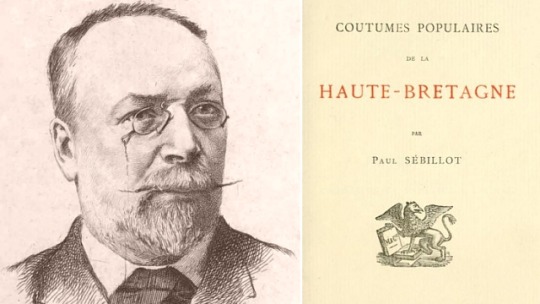
23 avril 1918 : mort du folkloriste, peintre et écrivain Paul Sébillot ➽ http://bit.ly/Paul-Sebillot Fondateur de la « Société des traditions populaires » et de la « Revue des traditions populaires », il était, de son vivant déjà, considéré comme le premier folkloriste de France, et son oeuvre est empreinte d’une clarté, d’une simplicité, d’une érudition élégamment dissimulée malgré la précision consciencieuse du détail
#CeJourLà#23Avril#Sébillot#folkloriste#folklore#traditions#populaires#érudit#écrivain#biographie#histoire#france#history#passé#past#français#french#news#événement#newsfromthepast
14 notes
·
View notes
Text
The Drac of Beaucaire
Note: I'm an English learner and I wrote this text to practise my written English. If you want to give me feedback about my English, please go ahead!
I mentioned yesterday a creature called the drac.
The drac exists in several french tales and legends, especially in Occitania and western Auvergne-Rhône-Alpes. It is most often an incarnation of the Devil, which takes the form of all sorts of creatures, objects, and people. But it seems unable to become a needle as it doesn't know how to pierce its head.
There are plenty of dracs in France, and the one I want to talk about lives in the Rhône, near the commune of Beaucaire. Gervase of Tilbury was the first one to write about the creature in his encyclopaedia Recreation for an Emperor (Otia imperialia), in the early 13th century. He portrays a dragon living in the Rhône. It is said that the drac lives in a palace deep in the river. With golden objects, it attracts people to the river and takes them. It especially targets breastfeeding women so they can feed its own children.
There are different versions of this story. One of my favourite was told by Paul Sébillot in Le Folklore de la France : La mer et les eaux douces (The Folklore of France: Sea and freshwaters). Here is a synopsis:
A woman from Beaucaire was cleaning her laundry in the Rhône when she noticed a wooden bowl floating on water. She was intrigued and tried to grab it, but it moved away. She wanted to go closer, but the more she tried to approach it, the further it was. When she reached a deep area of the river, the drac caught her and took her into the depth. It brought her to its place and tasked her to feed its child. She has been its prisoner for years. One day, she was given a cake with snake flesh. While eating it, she touched her eye with her greasy hands and noticed that she could see distinctly under water. It finally let her go seven years after snatching her. She went back to Beaucaire and explained to startled inhabitants what had happened to her. She told them the drac fed on human flesh, and, sometimes, it took human form to hide among them. One day, she met another drac. It had taken human form, but she recognised it with her power. The drac knew how she saw him, and touched her eye to remove her ability.
The drac of Beaucaire is just one of the many legends and tales about this creature. There is a story where it becomes a ball of string to trick a woman. In another tale, it is a mare or a donkey, of which body grows longer as more people mount it. Or a story where it is the master of the ocean.
Sources below
PERBOSC Antonin. Mythologie populaire : le Drac, l'Étouffe-vieille et le Matagot d’après les traditions occitanes. Revue de Folklore français et de folklore colonial, 1941, t. XII, n°1, p. 1-18.
URL (PDF)
SÉBILLOT Paul. Chapitre IV : les rivières, Partie 2 : Habitants et hantises des rivières. In: Le Folklore de la France. La mer et les eaux douces. Paris, France: E. Guilmoto, 1905, p. 339-361.
URL (Gallica)
DELMAS Marie-Charlotte. Drac. In: Dictionnaire de la France Merveilleuse. Paris, France: Omnibus, 2017, p. 186-191.
BLADÉ Jean-François. Le drac. In: Contes de la Gascogne. Paris, France: Calmann Lévy, 1895, p 193-207.
3 notes
·
View notes
Photo

23 avril 1918 : mort du folkloriste, peintre et écrivain Paul Sébillot Fondateur de la « Société des traditions populaires » et de la « Revue des traditions populaires », il était, de son vivant déjà, considéré comme le premier folkloriste de France, et son oeuvre est empreinte d’une clarté, d’une simplicité, d’une érudition élégamment dissimulée malgré la précision consciencieuse du détail ➽ https://bit.ly/36hEdj1
#CeJourLà#23Avril#Sébillot#folkloriste#folklore#traditions#populaires#érudit#écrivain#biographie#histoire#france#history#passé#past#français#french#news#événement#newsfromthepast
7 notes
·
View notes
Text
About the “meneurs de loups”
In Haute-Bretagne, the man who led the wolves sometimes had the power to shapeshift into a beast, using a bottle the devil had given to him; he was then considered a real werewolf. [...] In the Morvan, every flute player was suspected to lead wolves. [...] Turned into a wolf, with the help of a devilish secret which would also make him bulletproof, he’d summon the wolves in some obscure crossroads. The wolves, sitting around him, would listen carefully to his instructions, for he spoke their language. [...] The meneurs de loups weren’t always werewolves, they were sometimes witches or people who had made a deal with the devil, and who would not shapeshift.
- Paul Sébillot, Croyances, mythes et légendes des pays de France, my translation
16 notes
·
View notes
Photo
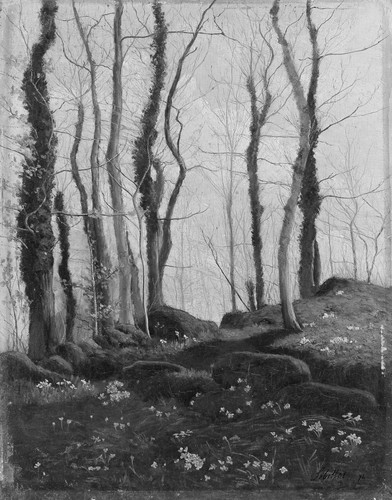
Spring in Brittany by Paul Sébillot, European Paintings
Gift of Paul-Yves Sébillot, 1949 Metropolitan Museum of Art, New York, NY Medium: Oil on wood
http://www.metmuseum.org/art/collection/search/437647
10 notes
·
View notes
Text
The devil also appeared in the woods, either to conclude pacts or to preside over the sabbaths. In the Puisaye, the aspirant witches would go to the biggest oak of the crossroads, before midnight. At midnight, they would burn a black hen while screaming three times: “Belzebuth! come, I give myself to you!” The devil would appear immediately, and when the man [or woman] had put a cross on a writing by which they sell their soul, they’d be granted the power to do evil.
- Paul Sébillot, Croyances, mythes et légendes des pays de France, my translation
7 notes
·
View notes
Photo

Spring in Brittany by Paul Sébillot, European Paintings
Gift of Paul-Yves Sébillot, 1949 Metropolitan Museum of Art, New York, NY Medium: Oil on wood
http://www.metmuseum.org/art/collection/search/437647
13 notes
·
View notes
Photo
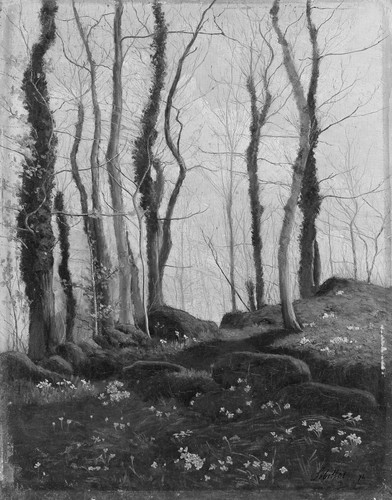
Spring in Brittany by Paul Sébillot, European Paintings
Gift of Paul-Yves Sébillot, 1949 Metropolitan Museum of Art, New York, NY Medium: Oil on wood
http://www.metmuseum.org/art/collection/search/437647
20 notes
·
View notes
Photo

Spring in Brittany by Paul Sébillot, European Paintings
Gift of Paul-Yves Sébillot, 1949 Metropolitan Museum of Art, New York, NY Medium: Oil on wood
23 notes
·
View notes
Photo
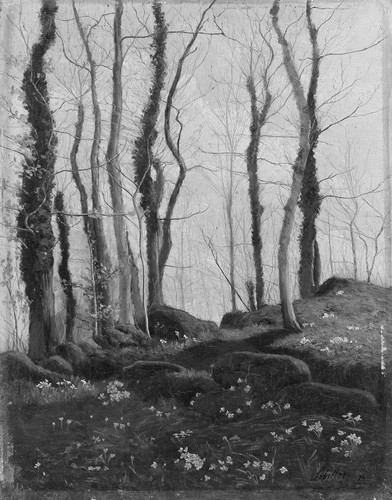
Spring in Brittany by Paul Sébillot, European Paintings
Gift of Paul-Yves Sébillot, 1949 Metropolitan Museum of Art, New York, NY Medium: Oil on wood
http://www.metmuseum.org/art/collection/search/437647
3 notes
·
View notes
Photo

Spring in Brittany by Paul Sébillot, European Paintings
Gift of Paul-Yves Sébillot, 1949 Metropolitan Museum of Art, New York, NY Medium: Oil on wood
12 notes
·
View notes